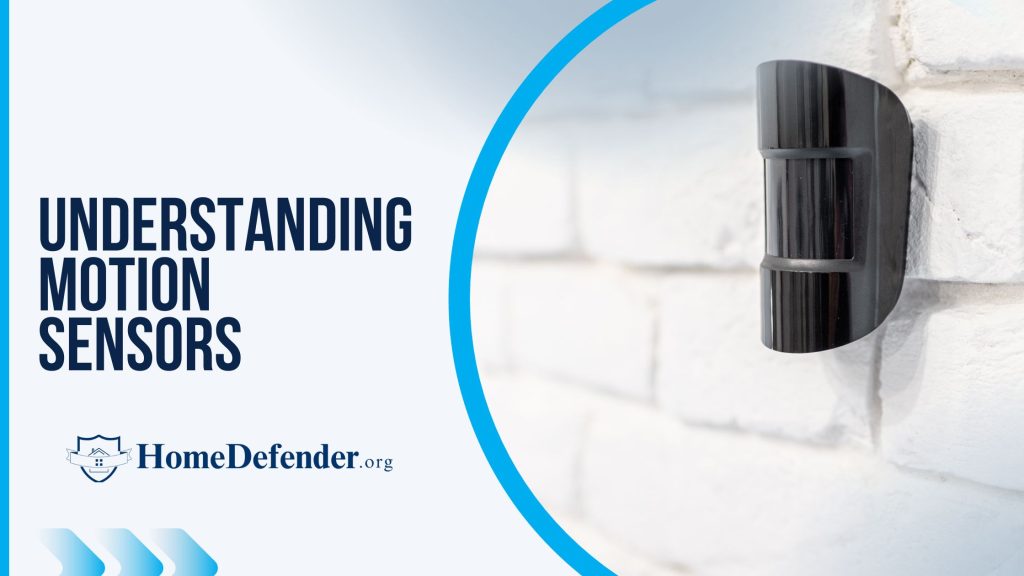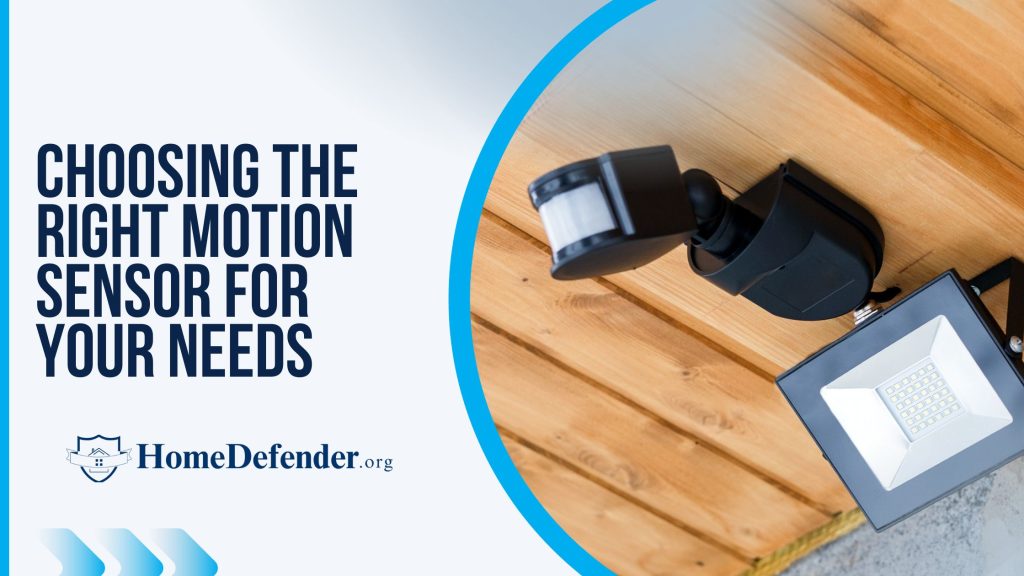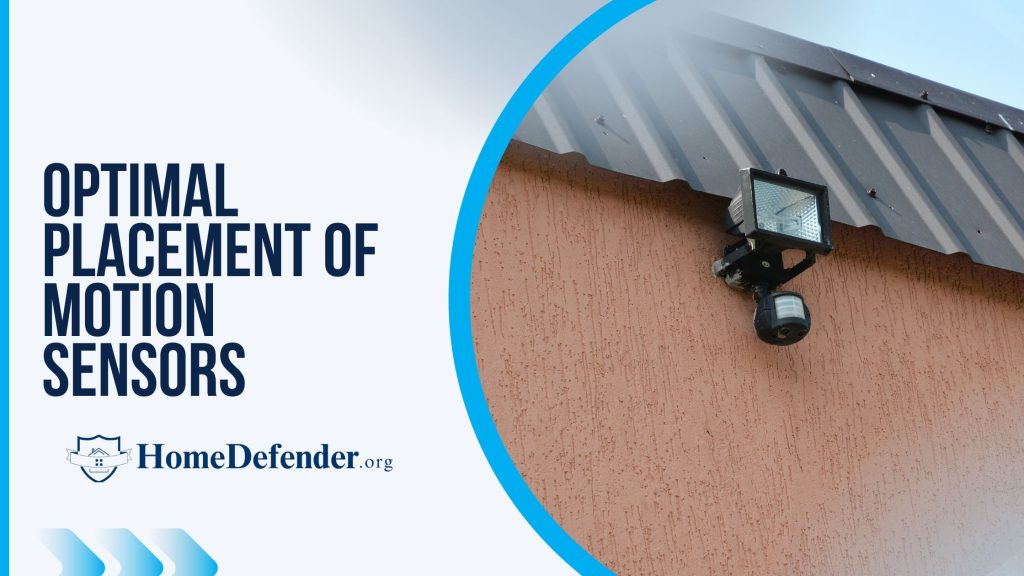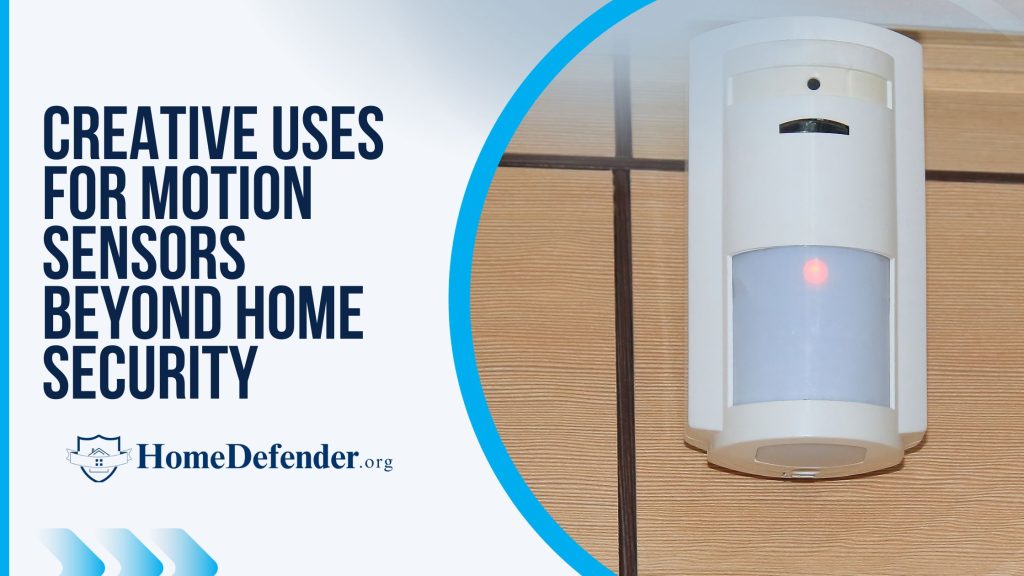Motion sensors have become an indispensable part of modern life, providing convenience, security, and peace of mind. But did you know that their applications extend far beyond home security? In this comprehensive motion sensor guide, we’ll delve into the world of motion sensors, exploring their inner workings, benefits, and the many creative ways they can be used to enhance your life.
From protecting your home and loved ones to automating your lighting and monitoring the safety of elderly family members, motion sensors have an array of applications that can simplify and secure your world. Join us as we uncover the secrets of these versatile devices and learn how to choose the right motion sensor for your unique needs in our motion sensor guide.
Key Takeaways
Motion sensors provide enhanced security and automation benefits for home security systems, with three common types of motion sensor: Passive Infrared (PIR), Microwave (MW) and Dual Technology.
Careful consideration is necessary when selecting the right motion sensor to meet individual needs, taking into account factors such as home security requirements, pet immunity & smart home integration capabilities.
Motion sensors can also be used creatively beyond traditional applications in automated lighting solutions, elderly care/monitoring & business settings.
Understanding Motion Sensors: How They Work and Their Benefits

Motion sensors are electronic devices that detect the presence of nearby individuals or objects, acting as motion detectors in various applications such as home security, automation, and surveillance. Motion sensors enhance the security and automation of a space by detecting changes in the environment, like heat or movement, using technologies such as passive infrared sensor, microwave, and dual technology.
But what makes motion sensors so appealing, and how exactly do they work? The advantages of motion sensors, including infrared motion sensors, are numerous. They:
Alert you to the presence of an intruder and activate alarms
Enhance security by activating lights, alarms, and video feeds
Detect objects regardless of their color, surface type, or material type
We’ll now explore the three most common types of motion sensors in more detail: passive infrared (PIR) sensors, microwave (MW) sensors, and dual technology motion sensors.
Passive Infrared (PIR) Sensors
Passive infrared (PIR) sensors, also known as passive infrared sensors, are devices capable of detecting body heat by identifying changes in temperature. Once activated, the PIR motion sensor detects heat and movement in the surrounding environment, creating a protective “grid.” When an object in motion obstructs numerous grid zones and the infrared energy levels fluctuate rapidly, the infrared sensor is prompted to sound an alarm. PIR sensors are the most common type of motion sensor used in home security systems because they are both reliable and cost-effective.
The distinction between PIR sensors and active ultrasonic sensors lies in their detection methods. PIR sensors detect variations in infrared energy, while active ultrasonic sensors employ sound waves to recognize movement. PIR sensors, configured to disregard insignificant alterations in infrared radiation, allow personnel to move without triggering alarms. This feature makes them a popular choice for home security systems.
Microwave (MW) Sensors
Microwave motion sensors:
Emit microwave pulses that reflect off objects and return to the sensor
Provide coverage of a larger area than PIR sensors
Continuously emit microwaves
Determine the exact distance between objects and the sensor by calculating the reflection rate of objects
Register any alteration in the object’s reflection rate due to movement as motion
While microwave sensors can monitor a wider area than infrared sensors, they are more susceptible to object interference and electronic interference. Calibrating microwave sensors can be advantageous, as it allows for increased or decreased sensitivity, which is especially useful in situations where pets are present. With their extended coverage and precise detection, microwave sensors are a powerful addition to any security system.
Dual Technology Motion Sensors

Dual technology motion sensors combine the strengths of both passive infrared (PIR) and microwave doppler radar technologies to improve detection accuracy. The PIR sensor recognizes alterations in infrared radiation, while the microwave sensor perceives modifications in the frequency of the microwaves. When both sensors detect movement, the alarm is activated.
The advantages of utilizing dual technology motion sensors include increased reliability, accuracy in detection, and a reduction in false alarms. These sensors can be employed for various purposes, such as home security, automated lighting, elderly care and monitoring, and business applications. Thus, dual technology motion sensors offer a dependable and precise means of detecting movement for a multitude of scenarios.
Choosing the Right Motion Sensor for Your Needs

Selecting the ideal motion sensor for your needs requires careful consideration of factors such as home security requirements, pet immunity, and smart home integration capabilities. Understanding the strengths and weaknesses of different sensor types and evaluating your specific needs will guide you in making an informed decision that ensures optimal performance and protection.
In the sections that follow, we’ll discuss factors such as home security requirements, pet immunity, and smart home integration capabilities that you should consider when choosing a motion sensor. Armed with this knowledge, you’ll be well-equipped to select the perfect motion sensor for your unique situation.
Home Security Requirements
When evaluating your home security needs, consider factors such as the size of the area to be monitored, the type of intruders you want to detect, and any additional requirements specific to your situation. For instance, if you have a large property with multiple entry points, you may require a more advanced system with a combination of PIR and microwave sensors to ensure comprehensive coverage.
Additionally, consider your home’s specific security vulnerabilities, such as easily accessible windows or dark corners where intruders could potentially hide. Strategically placing motion sensors in these identified areas can maximize their effectiveness and provide the best protection for your home.
Pet Immunity
For households with pets, pet immunity is a crucial feature to consider when selecting a motion sensor. Pet-immune motion sensors are designed to differentiate between human motion and animal motion, preventing false alarms from being triggered by pets. These sensors require two sensors to be triggered in a specific way to activate, ensuring that your furry friends won’t accidentally set off the alarm system.
While most pet-immune motion sensors can effectively ignore animals up to a certain weight, pets that are prone to jumping or exhibit higher levels of verticality may still activate false alarms. Choosing a motion sensor with pet immunity and carefully adjusting its sensitivity settings can help maintain a secure home environment while minimizing the risk of false alarms caused by pets.
Smart Home Integration
As smart home technology continues to advance, the ability to integrate motion sensors with other smart devices is becoming increasingly important. Some motion sensors are capable of connecting with smart home platforms such as SmartThings, Control4, or Google Home, allowing for voice control and seamless integration with other devices.
Integration of your motion sensor with your smart home system adds convenience and gives you more control over your home’s security and automation features. Understanding how motion sensors work can help you make the most of these possibilities, which include using a motion detector for:
Activating motion sensor light switches based on detected movement
Sending alerts to your smartphone when motion is detected
Adjusting thermostat settings based on occupancy
Triggering security cameras to start recording
Playing music or turning on the TV when you enter a room
The possibilities are virtually endless when you combine the power of motion sensors with smart home technology.
Optimal Placement of Motion Sensors

Proper placement of motion sensors is crucial for optimal performance and protection. Strategic positioning of your sensors can ensure effective detection of intruders while minimizing the risk of false alarms.
In this section, we’ll consider some key factors for placing your motion sensors, such as positioning at entry points, chokepoints, and ways to avoid false alarms.
From covering likely entry points to monitoring high-traffic areas, proper placement of your motion sensors can make all the difference in the effectiveness of your security system. Let’s dive into some specific considerations for optimal motion sensor placement, including:
Entry points
Chokepoints
Avoiding false alarms
Outdoor use
Entry Points and Chokepoints
Placing motion sensors near likely entry points and areas where intruders would have to pass through, such as hallways and staircases, is crucial for effective security coverage. Strategically positioning sensors at these locations can increase the likelihood of detecting an intruder and triggering an alarm before they can gain entry to your home.
In addition to entry points, consider placing motion sensors in chokepoints – narrow passages or points of congestion that link larger areas. Examples of chokepoints include hallways, stairwells, and doorways. Covering these areas enables effective monitoring of movement throughout your home, ensuring that your security system is always a step ahead of potential intruders.
Avoiding False Alarms
To minimize false alarms, position motion sensors away from heat sources, windows, and other factors that may unintentionally trigger them. For example, placing a motion sensor too close to a heating vent or an open window could result in false alarms due to temperature fluctuations or drafts.
Take the time to evaluate your home’s layout and identify potential sources of false alarms before installing your motion sensors. By carefully considering the placement of your sensors and adjusting their sensitivity settings as needed, you can minimize the risk of false alarms and ensure that your security system remains reliable and effective.
Outdoor Use
When using motion sensors outdoors, it’s essential to choose sensors specifically designed for outdoor use, as they are built to withstand the elements and provide reliable detection in various weather conditions. Position your outdoor motion sensors to cover the desired area without being affected by weather conditions, such as direct sunlight or rain.
When you install motion sensors outdoors, consider the following:
Choose outdoor-specific motion sensors
Position them strategically to provide adequate coverage
Avoid interference from weather conditions or passing animals
By following these tips, you can effectively secure your home’s exterior and enjoy added peace of mind.
Installation and Setup of Motion Sensors

Installing and setting up motion sensors involves choosing between wireless and wired options, connecting them to your security system, and adjusting sensitivity settings to ensure optimal performance. In this section, we’ll explore the various aspects of motion sensor installation and setup, including wireless versus wired sensors, connecting to your security system, and adjusting sensitivity settings.
With the right installation and setup, your motion sensors can provide reliable and effective protection for your home. Let’s examine the various aspects of motion sensor installation and setup in more detail, including wireless versus wired options, connecting to your security system, and adjusting sensitivity settings.
Wireless vs. Wired Motion Sensors
Wireless motion sensors are easier to install and offer more flexibility in terms of placement, as they do not require physical wiring. Additionally, wireless sensors can be easily relocated if needed, making them a popular choice for homeowners who want a more adaptable security solution. However, wireless sensors rely on batteries and must be regularly inspected and replaced.
On the other hand, wired motion sensors are typically more reliable than their wireless counterparts, as they do not require batteries or wireless signals. However, wired sensors necessitate professional installation, as they must be connected to the alarm system through physical wires.
Ultimately, the choice between wireless and wired motion sensors depends on your specific needs and preferences.
Connecting to Your Security System
Once you’ve chosen a motion sensor type, the next step is to connect it to your security system. This can be done by following the manufacturer’s instructions or using a DIY approach with a smart hub. When connecting your motion sensor to your security system, ensure that all connections are secure and that the sensor is properly powered.
Properly connecting your motion sensor to your security system ensures seamless communication between the devices, enhancing the overall effectiveness of your security setup. With your motion sensor connected and functioning correctly, you’ll be well on your way to a safer and more secure home.
Adjusting Sensitivity and Settings
Adjusting the sensitivity and settings of your motion sensor is crucial for minimizing false alarms and ensuring proper detection of intruders. Most motion sensors allow for sensitivity adjustments, enabling you to fine-tune the device’s performance to suit your specific needs.
Take the time to experiment with different sensitivity settings and configurations to find the optimal balance between reliable detection and false alarm prevention. Careful adjustment of your motion sensor’s sensitivity and settings ensures that your security system remains effective and dependable.
Creative Uses for Motion Sensors Beyond Home Security

While motion sensors are commonly associated with home security, their versatile nature allows for various creative applications beyond intrusion detection. In this section, we’ll discuss some innovative uses for motion sensors, including automated lighting, elderly care and monitoring, and business applications.
By thinking beyond traditional home security, you can harness the full potential of motion sensors and discover new ways to simplify and enhance your life. Let’s dive into some creative applications for motion sensors that demonstrate their true versatility and value.
Automated Lighting
Pairing motion sensors with smart lighting systems can create an efficient and convenient automated lighting solution. Connecting motion sensors to your smart lighting system allows automatic turning on and off of lights based on detected movement. This process conserves energy and provides added convenience.
Whether you’re looking to save on energy costs or improve safety by illuminating dark areas when movement is detected, automated lighting is an excellent application for motion sensors. By combining the power of motion sensors with smart lighting, you can:
Save energy by automatically turning off lights when no motion is detected
Improve safety by illuminating dark areas when movement is detected
Create a more efficient and convenient home environment
Elderly Care and Monitoring
Motion sensors can play a significant role in elderly care and monitoring, ensuring the safety and well-being of elderly family members. Installing motion sensors in key areas of the home allows you to monitor your loved one’s movements and receive alerts if any irregular activity is detected.
This added layer of security can provide peace of mind for family members, knowing that their elderly loved ones are safe and well-monitored. With motion sensors in place, you can ensure the safety of your elderly family members while also providing them with the independence they deserve.
Business Applications
In business settings, motion sensors can be used for a variety of purposes, including:
Theft prevention
Automated lighting
Temperature control
Employee monitoring
Occupancy detection
Strategically placing motion sensors in key areas of your business can enhance security, reduce energy consumption, and potentially improve employee productivity.
Whether you’re looking to protect valuable assets, automate lighting for energy savings, or monitor employee performance, motion sensors can provide valuable insights and controls for businesses of all sizes. By exploring the many applications of motion sensors in a business setting, you can unlock their full potential and enhance your operations.
Summary
Throughout this comprehensive guide, we’ve explored the many facets of motion sensors, from their inner workings and benefits to their various applications in home security and beyond. By understanding the different types of motion sensors available, and considering factors such as home security requirements, pet immunity, and smart home integration, you can choose the perfect motion sensor to meet your unique needs.
As we’ve seen, the potential applications for motion sensors extend far beyond traditional home security. From automating lighting and monitoring elderly family members to enhancing business operations, these versatile devices can truly transform the way we live and work. With the right motion sensor in place, you can enjoy a safer, more efficient, and more convenient world.
Frequently Asked Questions
What is the best way to use a motion sensor?
The best way to use a motion sensor is to place it in the corner of each room, aiming toward the doorway at least 6–8 feet off the ground, with no obstructions blocking its line of sight. It should also be kept away from sources of heat and in climate-controlled rooms.
What are the three types of motion detectors?
There are three types of motion detectors: active, passive infrared (PIR), and combined. These can be used to detect objects in and around 6.5 feet to 70 feet, or further depending on the product, and can each be utilized for different purposes.
What are the settings on a motion detector?
A motion detector typically has three settings: sensitivity, timer, and lux. These settings control the light’s responsiveness to movement, how long it will stay on after motion is detected, and the darkness level at which the light will activate.
How do you not get detected by a motion sensor?
Silicone spray or glass placed in front of the sensor when it’s off are two possible ways to go undetected by a motion sensor. The former is invisible while the latter will be obvious if discovered.
How can I avoid false alarms with my motion sensors?
Position motion sensors away from heat sources, windows, and other factors that may trigger false alarms, and adjust the sensitivity settings accordingly to reduce the likelihood of a false alarm.



